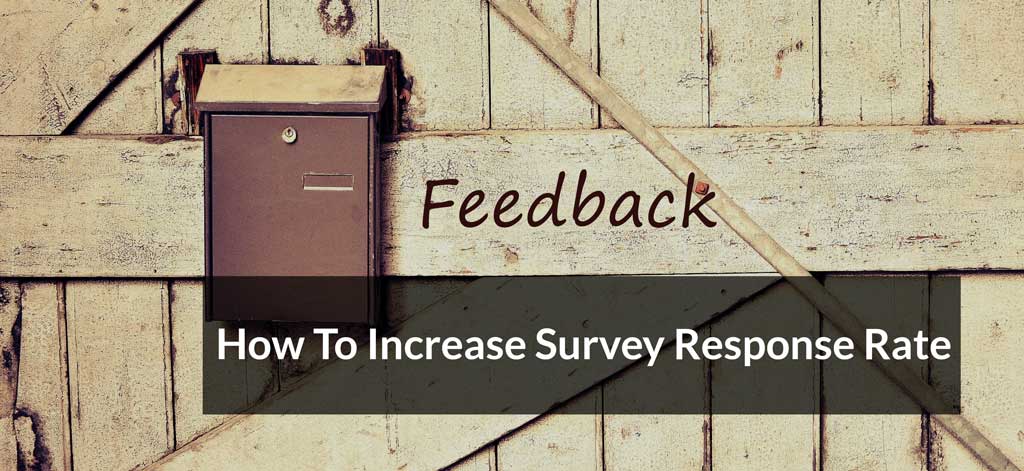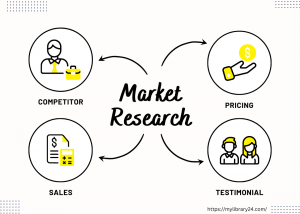Nonresponse error is always a potential problem with mail surveys. Individuals who are interested in the general subject of the survey as more likely to respond than those with less interest or little experience. Thus, people who hold extreme positions on an issue are more likely to respond than individuals who are largely indifferent to the topic.
To minimize the bias, researchers have developed a number of techniques to increase the response rate to mail surveys. For example, almost all surveys include postage-paid return envelopes.
Using a stamped return envelope instead of a business reply envelope increases the response rate even more. Designing and formatting attractive questionnaires and wording questions so that they are easy to understand also help ensure a good response rate.
However, special efforts may be required even with a sound questionnaire. Several of
How to increase survey response rate
Cover Letter:
A cover letter that accompanies a questionnaire or is printed on the first page of the questionnaire booklet is an important means of inducing a reader to complete and return the questionnaire.
The first paragraph of the letter explains why the study is important. The basic appeal alludes to the social usefulness of responding. Two other frequently used appeals are asking for help (“Will you do us a favor?”) and the egotistical appeal (“Your opinions are important”).
Most cover letters promise confidentiality, invite the recipient to use an enclosed postage-paid replay envelope. Describe any incentive or reward for participation, explain that answering the questionnaire will not be difficult and will take only a short time. And describe how the person was scientifically selected for participation.
Money Helps:
The respondent’s motivation for returning a questionnaire may be increased by offering money incentives or premiums. Although pens lottery tickets and a variety of premiums have been used. Monetary incentives appear to be the most effective and least biasing incentive.
Money attracts attention and creates a sense of obligation. Perhaps, for this reason, monetary incentives work for all income categories.
Interesting Questions:
The topic of the research and thus the point of the questions cannot be manipulated without changing the definition of the research problem.
However, certain interesting questions can be added to the questionnaire, perhaps at the beginning to stimulate respondents’ interest and to induce cooperation.
By including questions that are of little concern to the researchers but that the respondents want to answer. The researchers may give respondents who are indifferent to the major questions a reason for responding.
Following-ups:
Most mail surveys generate responses in a pattern on which graphs the cumulative response rate for two mail surveys. The response rate is relatively high for the first two weeks (as indicated by the steeples of each curve), then the rates gradually taper off.
After responses from the first wave of mailing begin to trickle in, most studies use a follow-up letter or postcard reminder. Which request that the questionnaire be returned because a 100-percent return rate is important.
A follow-up may include a duplicate questionnaire or may merely be a reminder to return the original questionnaire. Multiple contracts almost always increase the response rate. The more attempts made to reach people, the greater the chances of their responding.
Advanced Notification:
Advance notification, by either letter or telephone, that a questionnaire will be arriving has been successful in increasing the response rate in some situations.
Advance notices that go out closer to the questionnaire mailing time produce better results than those sent too far in advance. The optimal lead time for advance notification is three days before that mail survey is to arrive.
Survey Sponsorship:
Auspices bias may result from the sponsorship of a survey. One business-to-business researcher wishes to conduct a survey of its wholesalers to learn their stocking policies and their attitudes concerning competing manufactures.
A mail questionnaire sent on the corporate letterhead very likely would have received a much lower response rate than the questionnaire actually sent. Which used the letterhead of a commercial marketing research firm.
Sponsorship by
A mail survey sent to members of a consumer panel will receive an exceptionally high response rate. Because panel members have already agreed to cooperate with surveys.
Other Techniques:
Numerous other devices have been used for increasing the response rate. For example, the type of postage (commemorative versus regular stamp), envelope size, the color of the questionnaire paper, and many other factors have been varied in efforts to increase response rates.
Each has had at least limited success in creation situations; unfortunately, under other conditions each has failed to increase response rates significantly.
The researcher should consider his or her particular situation. For example, the researcher who is investigating consumers faces one situation; the researcher who surveying corporate executives feces quite another.




